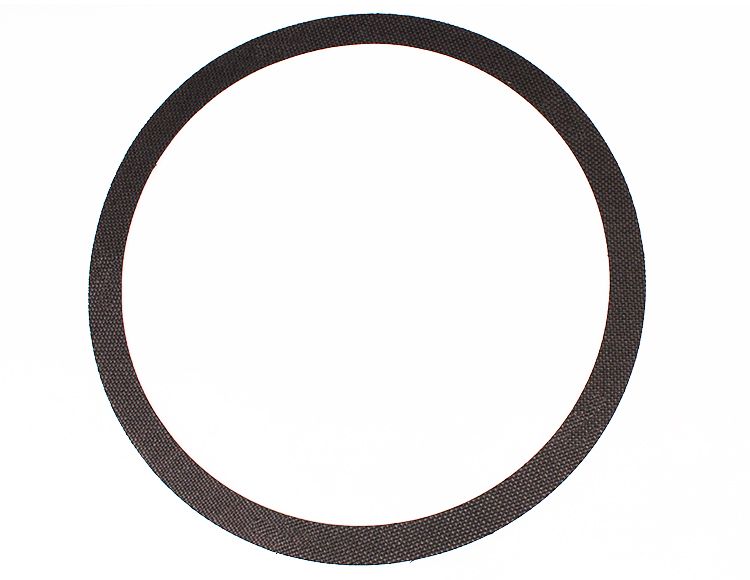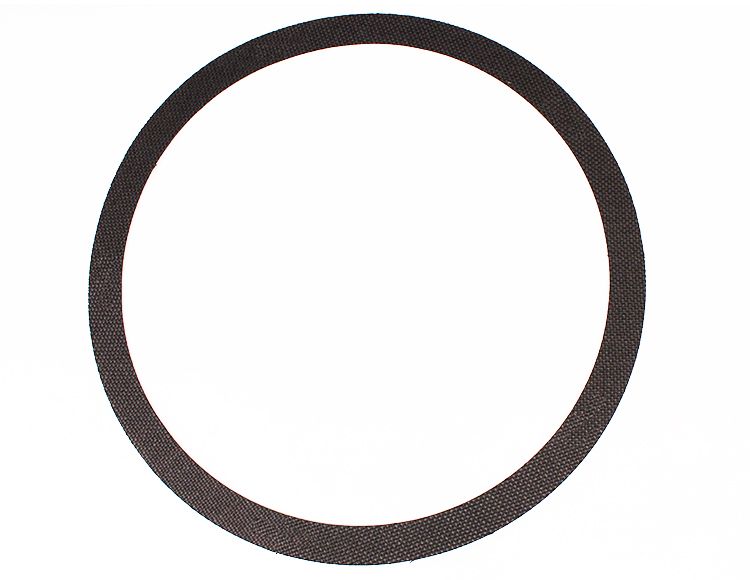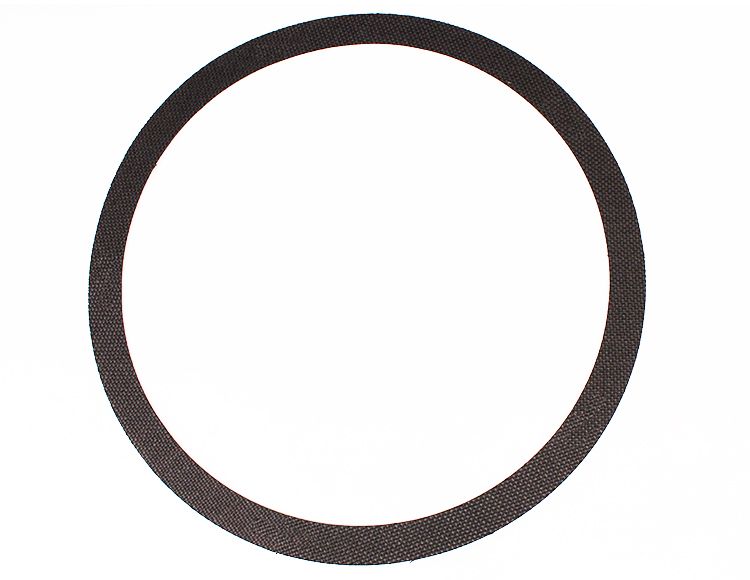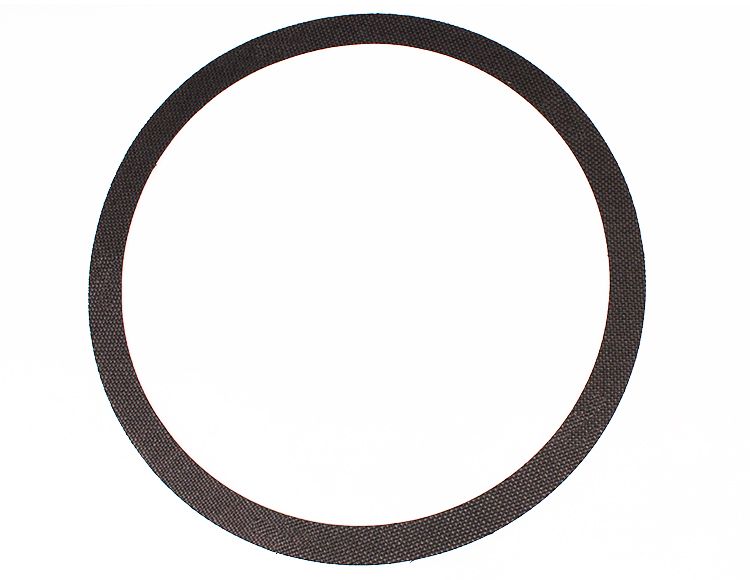Identifying those GM 300mm Dampers
Ed Lee
The 300mm converter has become very popular in GM units. First used in the Corvette and F-model vehicles (Firebirds and Camaros), today it is also used in most trucks, vans, and SUVs. The converter is also manufactured in a 280mm version (VJCX, for example).
When the 300mm converters were used only in the Corvettes and F-cars, they had a “graphite type” non-slip clutch lining (see Figure 1). This lining was porous in nature and helped the TCC engagement feel. When the clutch apply strategy evolved to the ECCC strategy, the lining was upgraded to woven carbon (see Figure 2). The graphite type lining was never used in 300mm converters in truck applications. In the truck applications, the lining started off as woven carbon and that lining is still what’s used today.
 |  |
When GM started using ovate (oval) wire spring, the automaker discovered it was possible for a single spring coil with ovate wire to replace a conventional inner and outer set – an obvious cost savings. Eventually the ovate single-coil springs replaced all of the inner and outer spring sets. During the time that the dampers were being transitioned from the conventional inner and outer spring sets to the ovate springs, many different combinations could be found. For instance, it was possible to find two sets of double springs and four single springs in the same damper (see Figure 4).
 |  |
 As long as all of the spring cavities (pockets) are being used, this is a good method of separating the V8 from the V6 dampers. This method works well on most 300mm converters, i.e., the TMAX, TMBX, TLBX and TLCX code converters. With the 280mm converters, you may find a few exceptions. For example, the VJCX code converter may be found with a 6-pocket damper with only four pockets being utilized. In this case the damper should be treated as if it was a 4-pocket damper and only used in V6 applications (see Figure 5).
As long as all of the spring cavities (pockets) are being used, this is a good method of separating the V8 from the V6 dampers. This method works well on most 300mm converters, i.e., the TMAX, TMBX, TLBX and TLCX code converters. With the 280mm converters, you may find a few exceptions. For example, the VJCX code converter may be found with a 6-pocket damper with only four pockets being utilized. In this case the damper should be treated as if it was a 4-pocket damper and only used in V6 applications (see Figure 5).
It is very important to have the correct damper springs for each application. If the damper springs are too heavy, the TCC engagement feel will be firmer. This may or may not turn out to be a drivability complaint. The real problems are created when the damper springs are too weak. If the damper springs bottom out during torque reversal before the TCC releases, the release feel will be like a kick in the backside.
Don’t rely on converter codes to identify a 300mm converter damper. Counting the number of spring pockets is the best method of separating the dampers – provided the spring pockets are being used. Also remember that the graphite-type lining (which looks like most aftermarket high carbon) was only used for early Corvettes and F-cars. Most ECCC applications will use the woven carbon lining.
Performance engine builders have been using ovate springs for valve springs for years. Ovate springs are also being used in the accumulators of some late model 4L60-E transmissions.
For most converter shops, previously trying to identify 300mm dampers was like being placed into a barrel and being told to stand in the corner. Hope this information makes identifying the 300mm dampers a little easier.
Related Units
Related Parts
Required
Recommended
280mm LU (4L60-E) “VJCX”, 298mm LU (TH250C, TH350C, 200-4R, 4L60 & E), 300mm (4L60-E)
Friction Ring S20250WC
- Material: WC
- Outer Dia.: 11.125"
- Inner Dia.: 10.000"
- Thickness: 0.020"
Required
Recommended
245mm LU Euro (5L40-E), 258mm LU (4L60-E, 5L40-E), 258mm LU (4T65-E), 4L60-E (298mm), Single-Plate Performance Converter, 4L60-E (300mm), Single-Plate Performance Converter, 6L80 (300mm), Single-Plate Performance Converter
Friction Ring S20300WC
- Material: WC
- Outer Dia.: 9.500"
- Inner Dia.: 8.250"
- Thickness: 0.020"
Required
Recommended
245mm LU (3T40, 3L30, TH200C, 4T60-E, 4L60 & E:S-10 only), 4L60 (700-R4), 4L60-E, 200-4R (298mm) Single Plate Performance Converter (Mounting Ring), 4L60-E (300mm), Single-Plate Performance Converter (Mounting Ring), 4L80-E, 4L85-E, Single-Plate Performance Converter (Mounting Ring), AODE, 4R70W Performance Converter
Friction Ring S20320WC
- Material: WC
- Outer Dia.: 9.000"
- Inner Dia.: 7.750"
- Thickness: 0.020"
Required
Recommended
6T40/6T45, 236mm
Friction Ring S20680WC
- Material: WC
- Outer Dia.: 9.813"
- Inner Dia.: 8.562"
- Thickness: 0.020"
Required
Recommended
6L80, 6L90 (300mm)
Friction Ring S20750WC
- Material: WC
- Outer Dia.: 11.120"
- Inner Dia.: 9.840"
- Thickness: 0.020"
Required
Recommended
6F50/6F55, 6T70/6T75
Friction Ring S20930WC
- Material: WC
- Outer Dia.: 10.200"
- Inner Dia.: 9.200"
- Thickness: 0.020"
Required
Recommended
6L90 (Captive Clutch)
Friction Ring S20960WC
- Material: WC
- Outer Dia.: 10.170"
- Inner Dia.: 9.055"
- Thickness: 0.020"
While Sonnax makes every effort to ensure the accuracy of technical articles at time of publication, we assume no liability for inaccuracies or for information which may become outdated or obsolete over time.






